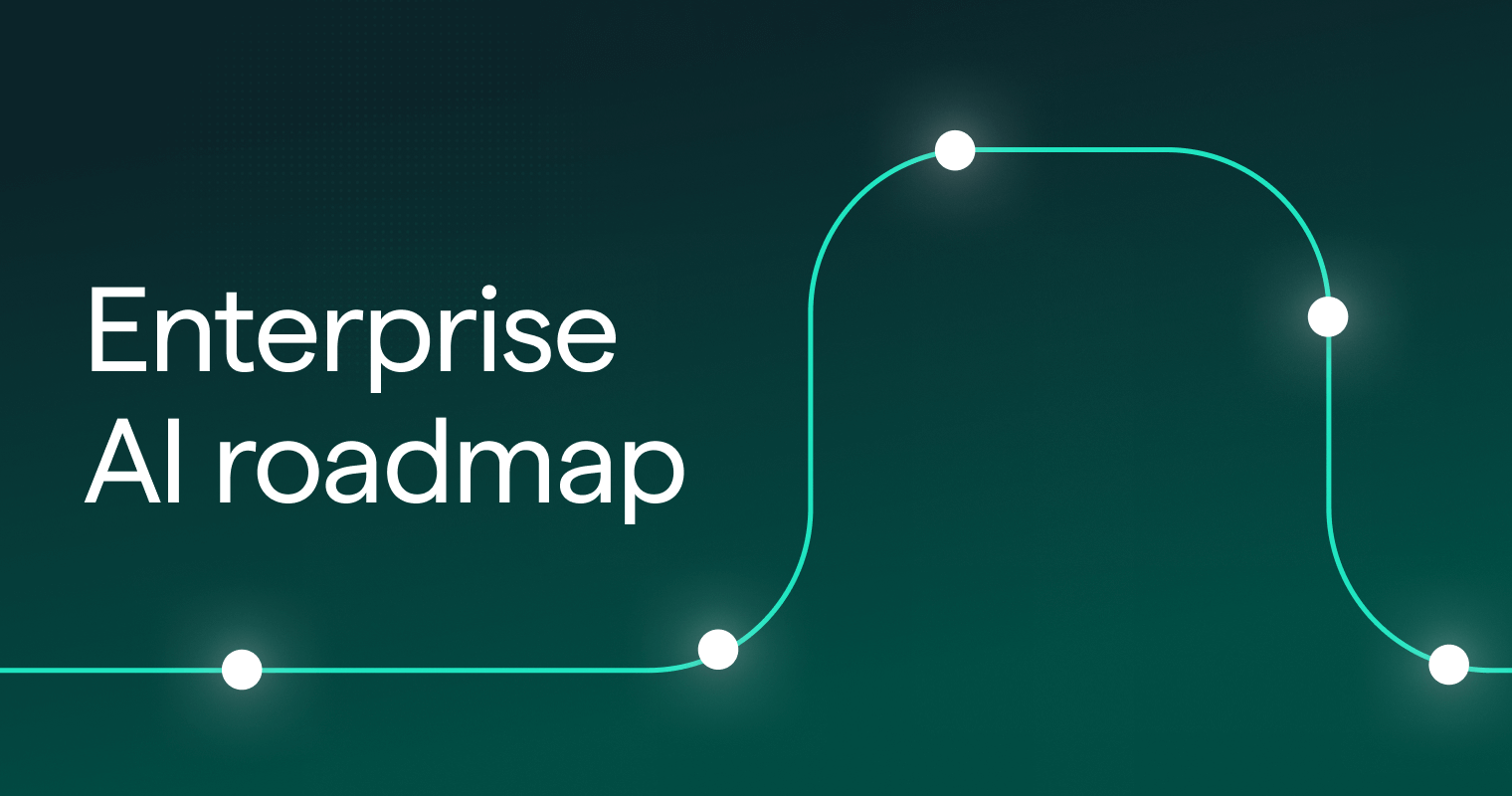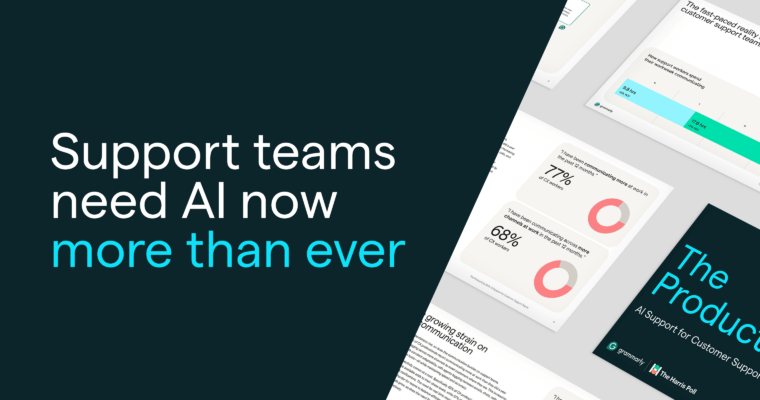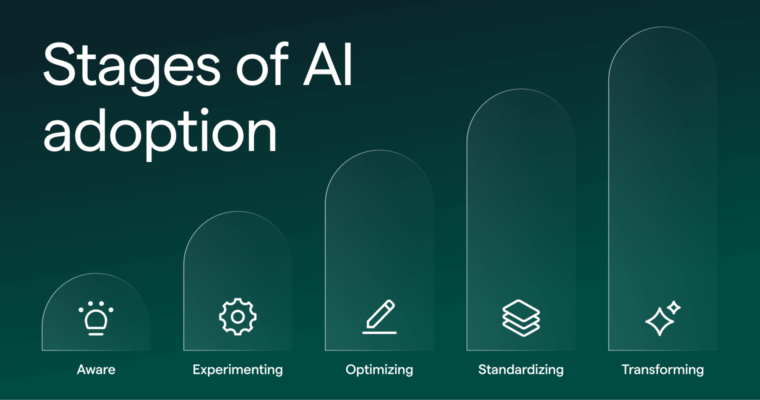AI is fundamentally changing the way we communicate at work. It’s not just a technological upgrade or another productivity tool; it presents a fundamental shift in how businesses and employees operate. The learning curve to achieve enterprise-wide AI adoption might seem steep, but it is achievable.
Every business is starting at a different place with AI. Those slower to adopt likely feel behind, especially if they are still avoiding the technology altogether. Early adopters might be ahead of the curve and the competition now; however, with an emerging technology like AI, the curve continues to move. We are all at the beginning of a long-term shift that takes proactive planning, incremental adjusting, and the occasional pivot to achieve true transformation and see real results.
No matter where you are in your journey, if you want to achieve enterprise-wide adoption, the best place to begin is with AI literacy. Read on to get the roadmap to equip your workforce with the resources to achieve AI literacy—and prepare your business to enter the next stage of AI adoption.
5 actionable steps to achieve enterprise-wide AI adoption
Business leaders looking to get ahead with the power of AI must take a strategic and comprehensive approach to achieving enterprise-wide adoption. Here’s a roadmap to help you steer your organization through the intricacies of adopting and integrating AI effectively.
1. Gain buy-in from leadership and employees
The journey to full AI adoption begins with gaining buy-in, not just from the top executives at your company but also from employees who will be expected to use AI in their daily work. Start by demystifying AI, explaining the basics of AI usage, and showcasing the benefits for everyone involved. Here are a few actionable next steps to take:
- Assign an AI business driver or tiger team to manage the research, strategy, and implementation across your company.
- Educate your leadership through a series of workshops in which you bring in experts to share the benefits, challenges, and strategic importance of AI to transform business communication. You’ll need their approval before investing in new technology or implementing any new policies.
- Engage and prepare employees through interactive sessions, such as town halls and Q&As. In these sessions, you should not only outline the impact that AI will have on the business but also the benefits that it will bring to their specific roles. It’s crucial for employees to understand how they’ll be able to leverage AI in their daily tasks to make their work more efficient and their communication more effective.
- Showcase early wins that you achieve in pilot programs where key individuals or teams experiment with AI tools. These successes will boost confidence among employees and leadership alike.
2. Provide training and education to improve AI literacy
Next, make AI education a top priority. AI literacy is a foundational skill for every employee to focus on. Here is how you can equip your workforce with the resources they need to use AI systems responsibly, effectively, and with the desired outcomes:
- Launch AI onboarding programs that provide an overview of AI technologies, touching on everything from basic concepts and best practices to risks and security considerations.
- Align AI education with how people work to address usage and literacy gaps between levels and teams. Create customized training sessions that are practical, hands-on, and tailored to every function within your organization. They should focus on the specific AI tools and use cases that they will use in their role on a daily basis.
- Promote continuous learning for early-career and senior-level workers alike by regularly updating training materials to reflect the latest AI advancements and insights. This will ensure that your team remains on the cutting edge and you are constantly investing in upskilling your workforce.
- Offer a learning stipend for employees who are interested in further improving their AI literacy and fluency. This could be a portion of your company’s learning and development budget dedicated to providing external courses, workshops, and books to employees.
3. Invest in the right AI tools
Every function within your organization likely has countless options for AI tools. Over the past year, we’ve seen hundreds of point-solution startups pop up across industries. It’s a complicated landscape that gets more crowded by the day. Here’s how you can break through the noise and choose the right tools for your business:
- Identify AI capabilities in your current tech stack, looking for tools that your employees already use. Rather than investing in more tools, look for AI technology that works with your existing tech stack to create ease around AI adoption and everyday usage.
- Carefully select vendors based on criteria such as ubiquity, scalability, ease of integration, customer support, and robust data security. Look for AI technology that is easily embedded into employees’ existing workflows and communication channels.
- Invest in AI tools that can be customized to your brand guidelines and that tailor results to your organization’s context, tone, clarity, and fluency. This would create more consistent and effective communication across the entire company.
- Prioritize security and privacy by monitoring how your employees use AI technologies and watching for risky or unusual inputs and outputs. Security, data privacy, and protection of company intellectual property are top AI concerns for business leaders. Choose a secure and reputable AI provider to ensure the protection of sensitive company data.
4. Create acceptable usage guidelines and policies
With great power comes great responsibility. As you adopt powerful AI tools, it’s critical to guide their use with clear policies. After all, if you don’t have control over the AI systems your employees are using, how can you protect your data, your people, and your brand from the most common risks? Start with these steps:
- Develop an ethical framework for AI that addresses key issues such as data privacy, security, and bias. This framework should align with your brand’s values and compliance requirements.
- Draft clear usage policies that define acceptable and unacceptable uses of AI in your business operations. This will help prevent misuse and guide employees in making ethical decisions.
- Stay up to date on AI regulations to ensure your policies remain compliant with both local and international laws. Regular reviews and updates to your policies are necessary as regulations evolve.
- Prioritize standardization across your enterprise to ensure that all employees are using the same tools under the same guidelines. This will help combat the uncertainty that can arise from differences in AI use and proficiency.
5. Build an enterprise-wide AI culture
Finally, nurturing a culture that embraces innovation and continuous learning is vital for achieving sustainable AI success. Here’s how you can create a culture that supports your business transformation:
- Encourage employees to share effective prompts, best practices, and lessons learned with one another so everyone learns to use AI tools responsibly and celebrates wins together.
- Identify AI champions who experiment with new AI features and technologies. Think of these people as incubators for new ideas and inspiration for AI-driven innovation and skill sets.
- Incentivize innovation by offering rewards for teams or individuals who come up with new ways to leverage AI to improve communication. Recognition can go a long way in motivating employees to think creatively.
- Embrace AI for the long term by investing in continuous education and new technologies. Regularly seek feedback from employees to learn how to improve your operations and business communication with AI.
Embarking on the road to enterprise-wide AI adoption is no small feat—it requires a thoughtful and strategic approach. By securing buy-in, providing targeted training, establishing clear guidelines, investing in the right tools, and fostering a culture of innovation, you can position your organization not only to adapt tothe AI-driven future but to thrive.
Implementing AI enterprise-wide
The journey may be complex, but the potential rewards for your organization and its people are immense. Embrace the journey with openness and enthusiasm, and watch as AI transforms your business operations.
Want to learn more about AI literacy, the stages of AI adoption, and the roadblocks to improving communication across your enterprise? Download the ebook The New Language of Business: How an AI Literate Workforce Is the New Competitive Advantage.



